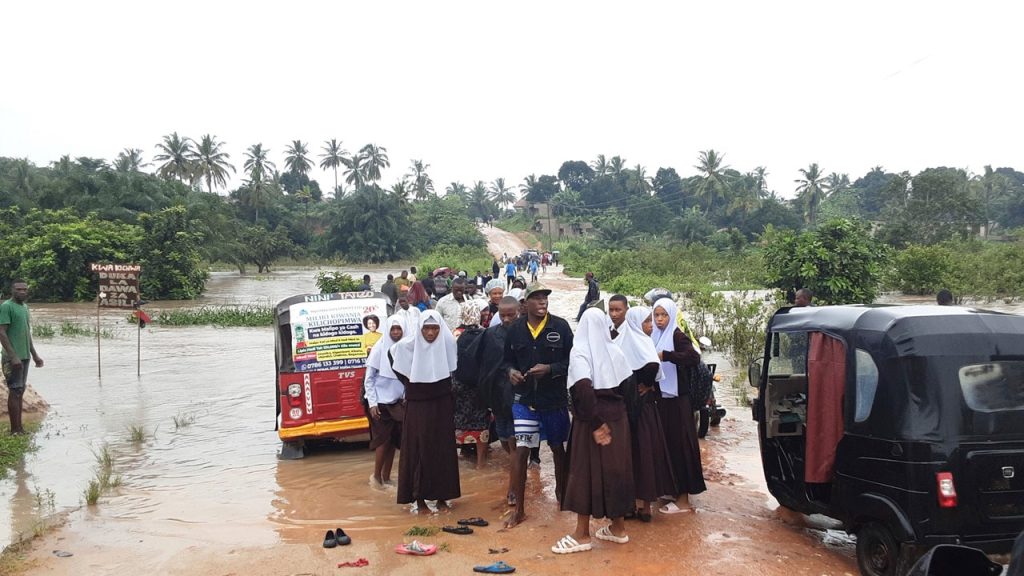Flooding in Tanzania, caused by weeks of heavy rain, has resulted in 155 deaths and affected more than 200,000 people. The prime minister, Kassim Majaliwa, attributes the worsening situation to the El Niño climate pattern that has intensified the ongoing rainy season, leading to the destruction of infrastructure like roads, bridges, and railways. He has advised those residing in low-lying areas to relocate to higher ground and urged district officials to ensure that aid reaches those in need. In total, over 51,000 households have been impacted by the floods. This crisis is not limited to Tanzania, as neighboring countries like Burundi and Kenya are also facing heavy rains and flooding.
In Kenya, the death toll from the flooding is currently at 35, with the number expected to rise as the flooding persists. In the Mathare slum in Nairobi, four bodies were recovered from flooded houses, with reports of more casualties emerging from the Mathare River. In response to the crisis, Kenyan President William Ruto led a multi-agency meeting focused on flood response, directing the National Youth Service to provide land for those affected by flooding. The situation in Kenya reflects the broader trend in the East African region, where heavy rains have led to widespread flooding and destruction.
The flooding in Tanzania has prompted the closure of schools and the deployment of emergency services to rescue those trapped by the rising waters. Prime Minister Majaliwa emphasized the need for swift action to assist those displaced by the floods and ensure that relief supplies reach those most affected. The impact of the flooding goes beyond immediate casualties, as vital infrastructure has been compromised, posing additional challenges for recovery efforts. The situation serves as a grim reminder of the vulnerability faced by communities in the face of extreme weather events exacerbated by climate change.
With the rainy season ongoing, there is a growing concern about the potential for further damage and loss of life in the region. The extreme weather events and their devastating consequences highlight the urgency of addressing climate change and building resilience in vulnerable communities. The East African countries affected by the flooding are likely to require significant support in terms of emergency response, recovery efforts, and long-term adaptation strategies to mitigate the impact of future disasters. International cooperation and assistance will be crucial in addressing the immediate needs and laying the groundwork for a more sustainable and resilient future in the region.
As the death toll rises and more people are displaced by the flooding, the need for coordinated action at the local, national, and regional levels becomes increasingly pressing. The governments of Tanzania, Kenya, and other affected countries must work together to provide relief to those in need, support recovery efforts, and strengthen infrastructure and systems to withstand future extreme weather events. The impact of the flooding on vulnerable communities underscores the importance of proactive measures to address climate change, reduce risk, and protect the most at-risk populations. While the immediate focus is on responding to the current crisis, the long-term goal should be to build a more sustainable and resilient future for all those affected by the devastating floods in East Africa. By prioritizing preparedness, mitigation, and adaptation, the region can better withstand the challenges posed by climate change and ensure the well-being of its citizens in the face of future disasters.


